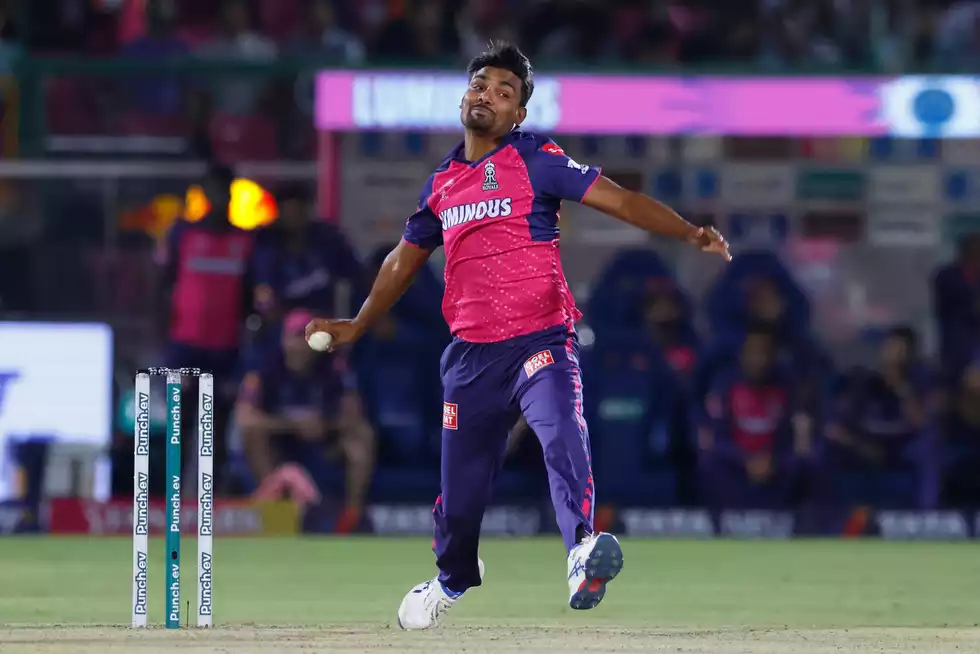Sandeep Sharma’s Evolution Is Still Having an Impact
Sandeep Sharma’s evolution is still having an impact
Sandeep Sharma, a 30-year-old seamer with part hair and a friendly demeanor, knows that in Twenty20 cricket, it’s all about survival of the fittest, whether Charles Darwin’s theory has persuaded him.
He bowled his second over of the innings at the beginning of the 17th over, a wide yorker to KL Rahul, who chased it and miscued it to sweeper cover. “I will never start the first ball on the wide line if I am bowling with a fresh ball. The ball should end in the line of stumps,” stated Sandeep of the Rajasthan Royals, highlighting his development as a death-over bowler.
It turned out to be a paradigm shift. The Lucknow Super Giants were down to 22 for 3 in the first four overs of their 194-run chase, but a comeback by Rahul, Nicholas Pooran, and Deepak Hooda had reduced the score to a respectable 49 off the next four overs. But Sandeep expertly stopped the batters’ momentum by forcing them to hit against the breeze with his slower balls.
The slower balls that Pooran and Marcus Stonis could not seem to put away, coupled with Rahul’s dismissal, allowed the Royals to pick up the tempo of the chase. Ashwin’s tight control over increased LSG’s pressure, and Sandeep’s barrage of slower deliveries and balls outside off turned the tide of the match. Sandeep, who was a late substitute for the Royals last season, has been a consistent presence in the IPL over the past ten years. He has previously lent his services to Sunrisers Hyderabad and Kings XI Punjab. mostly successful, occasionally revolutionary, but never taking center stage. His most effective weapon is swing, and he excels in the power-play. This was seen in his first IPL season with Kings XI Punjab when he returned the most wickets of any bowler with 18 from 11 innings.
In the final overs, his skill set was also showing signs of weakness. He gave up in 2014 at 13.12. Over the next three years.
Even with the improvements to 9.86, 10.21, and 10.79, respectively. His squad still couldn’t depend on him during the pivotal moment.
Nor was it meant to be his day to lead his team to victory on Sunday. The Royals had the choice to select between Rovman Powell’s powerful hitting in the last overs or Nandre Burger’s. All the batters, except for Shimron Hetmyer, made meaty contributions to ensure that Powell’s bat support was unnecessary. They gave Burger and Trent Boult new-ball duties.
Sandeep might have needed to bowl a few overs during the powerplay if they force the Royals had to insert Powell as a replacement. However, that was not to be. In the end, there were too many bowling choices, with Sandeep being the least well-known.
Even though Prasidh Krishna was ruled out, the fight for the Indian team’s maximum two seam-bowling berths was always going to be fierce. Because Avesh Khan, Kuldeep Sen, and Navdeep Saini were already in the lineup. Additionally, Boult had a lot of pressure to perform in the latter overs. Since he had to handle the power-play duties. It’s a feature of the game that Sandeep has developed, refined, and worked on.
It has emerged more by force than by choice.
With T20 cricket tactics often changing and part-timers bowling the opening over among the many options, many players can control the power play. However, in death overs bowling, that isn’t the case. There aren’t many people in India, or even the world, who have succeeded in playing that role with authority. Sandeep is well-versed in this supply and demand dilemma.
In the world game, there aren’t nearly as many death-over experts. Even fewer that can work as quickly as Sandeep can. As Bhuvneshwar Kumar has shown, he becomes more efficient when he can consistently nail the yorkers.
But other than his yorkers and slower variants, he doesn’t have a very broad skill set.
In 2019 he had shown promise in the death overs, delivering 12.4 overs and conceding at a mere 7.42 an over during that season. The following season, he bowled 13 overs in the same phase, conceding runs at a rate of 9.08 an over. Following two years of inconsistent play during which the majority of the competition was held in the United Arab Emirates, he enjoyed his most prosperous period in 2023, taking seven wickets at a 9.71 economy rate in 14.5 overs.
He experienced the best of both death-bowling pressure scenarios during the previous season. Preventing a rare defeat for Chennai Super Kings by stopping four runs off the final ball against MS Dhoni. Later, they struck a last-ball yorker off Abdul Samad. But they erred and the batsman hit for a six while stopping five runs. Had his side defeated SRH in that match, they might have advanced to the postseason. It was not to be, though.
He would have preferred to have moved past the ghosts of the previous season. So that, in the new season, he could present a rejuvenated and enhanced death-over bowler. On a day when both teams’ fortunes went up and down, a battle including some outstanding individual performances,
His final burst proved to be the decisive element in determining the outcome of the game. Sandeep praised the management of the RR squad. He stated, “I understood I would have fewer opportunities with the new ball when I joined the team. I spent a lot of time honing my slower bouncers, yorkers, and death bowling in the nets.


